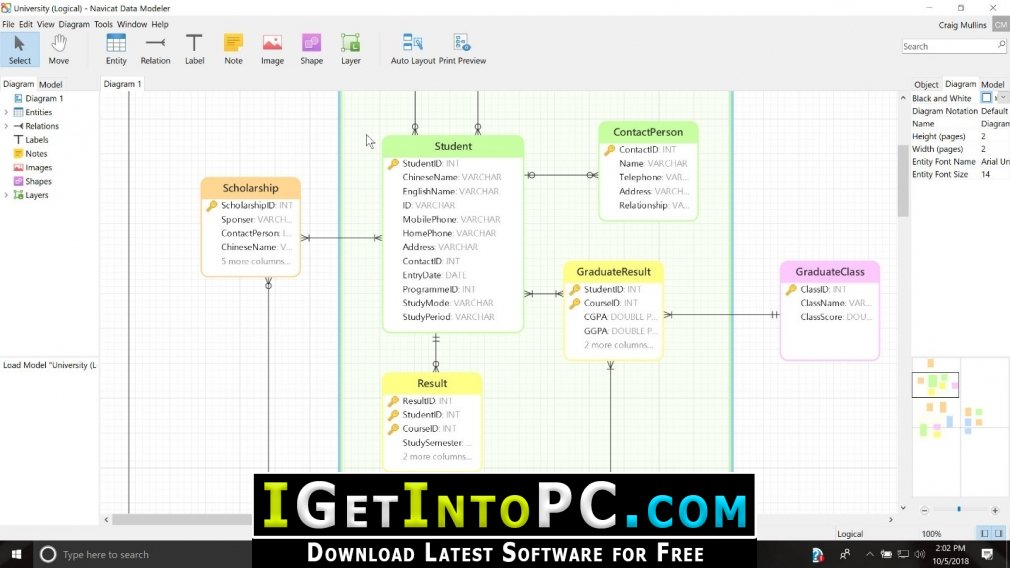

- #NAVICAT DATA MODELER STORED PROC PDF#
- #NAVICAT DATA MODELER STORED PROC DRIVERS#
- #NAVICAT DATA MODELER STORED PROC SOFTWARE#
#NAVICAT DATA MODELER STORED PROC DRIVERS#
It also explains the major drivers and regional dynamics of the global market and current trends within the industry. It also discusses technological, regulatory and economic trends that are affecting the market. Moreover, the increase in demand & supply gap as a resultant of sluggish supply chain and production line have made market worth observing. Market Factor Analysis: In this economic slowdown, impact on various industries is huge.
#NAVICAT DATA MODELER STORED PROC SOFTWARE#
Major highlights from the Study along with most frequently asked questions:ġ) What so unique about this Global Data Modeling Software Assessment?
#NAVICAT DATA MODELER STORED PROC PDF#
Know how Leaders in Data Modeling Software are keeping themselves one step forward with our latest survey analysisĬlick to get Global Data Modeling Software Market Research Sample PDF Copy Here While there is no sure-fire way to prevent data loss due to accidental or deliberate deletion, every counter-measure that we employ helps minimize the chances of a catastrophic event from taking place.Get ready to identify the pros and cons of regulatory framework, local reforms and its impact on the Industry. Now, if we try to run a query that would delete all of the rows in the table such as follows: It supports the use of both input and output parameters so we can store the results of the count(*) function to a variable. This can be accomplished using the built-in sp_executesql stored procedure. The best we can say about this safety check is that at least it would only fail in cases where the user to deliberately deletes all rows in a table.įor that reason, perhaps a better solution may be to expand on the idea of comparing the actual count of affected (deleted) rows to the expected count With only a few extra lines of code, we can count the number of rows in the table and rollback the transaction if the number of affected rows is equal to the total number of rows in the table. We could also add one additional layer of safety by checking that the whereclause parameter was supplied:ĭisallowing an empty where clause is not without drawbacks, in that there is nothing stopping someone from entering something like "id is not null". The delcnt parameter acts as a built-in fail-safe in that it forces the user to specify how many rows that he/she expects to be deleted. I our case, a message is displayed to tell us how many rows would have been deleted:Īs expected, the actcnt is zero, confirming that no rows were actually deleted:

Had we supplied a number, the procedure would have compared it to the server variable after the delete operation to determine if the number of records deleted match the expected number. By leaving it blank, if any rows are deleted, the transaction is rolled back, and the row(s) preserved. The delcnt specifies the count of records we expect to be deleted. Clicking it brings up a dialog to enter parameters: In Navicat, we can run a procedure right from the editor via the Execute button. This SQL Server procedure, shown in the Navicat for SQL Serverĭevelopment and admin client, accepts a table and whereclause parameter and returns the number of rows deleted: A Dangerous Deletion ProcedureĪs a starting point, let's take a stored procedure that will delete rows in a table based on a user-supplied where clause. We'll examine a couple of these in today's blog. Data Manipulation Language (DML) operations such as these always come with risk, and incidents may occur where someone accidentally issues a Delete command without a WHERE clause, thereby deleting all rows in a table! Luckily, there are some simple steps you can take to prevent accidental (or deliberate!) destructive DML operations. It's fairly common to allow certain users to perform ad-hoc updates or deletions to tables. Preventing All Records from Being Deleted Within a Stored Procedure by Robert Gravelle


 0 kommentar(er)
0 kommentar(er)
